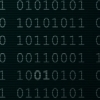This might a very trivial question for many of you
There are two 3D vectors A and B. The angle Alpha is between Vector A and B.
B origin is in fact the end point of Vector A.
By a rotation of Vector A, i would like vector B to "follow" and share with Vector B the same angle as before.
To give you a concrete example:
Originally :
[font="Menlo"][font="arial, verdana, tahoma, sans-serif"] [/font][/font]
Vector A is from : x = 1 , y= 4 z = 0 to x = 3.82 y =1.17 z = 0
Vector B is from : x = 3.82 , y = 1.17 z = 0 to x= 3.82 , y = 1.17 and z = -3
Vector A rotates 90 degrees And reach the following position from x = 1 y = 4 z = 0 to x = 5 y = 4 z = 0
And i get Vector B being : from x = 5 , y = 4 , z = 0 to x = 3.5 , y = 5.5 and z = -2.12
However, i would expected the Vector B to be in the following position : x = 5 y = 4 z = 0 to x = 5 , y = 4 and z = -3
I tried various options with a rotation matrix;sometimes ending it up in null cross products; other times having a unit vector which explain the "unwished rotation".
Now i am going to some translation of vectors on a same plane but i am meeting some issues in specific situation, where the Vector A and B are both on 2 dimensions instead of 3...
In other words, I am open to your wisdom
Would anyone know how to solve this problem ?
Many thanks in advance for any pointer or help you can provide
Babarorhum







